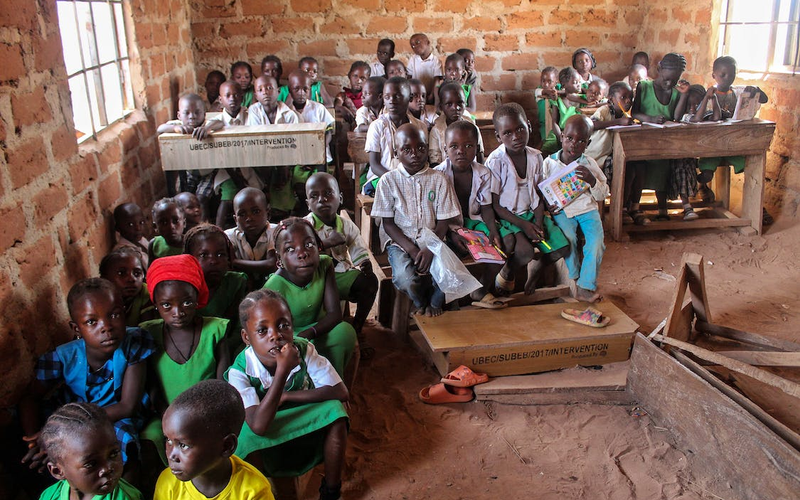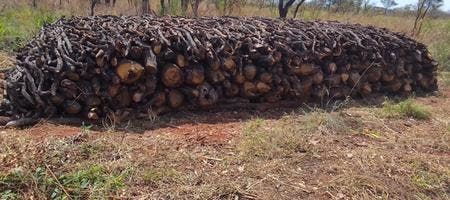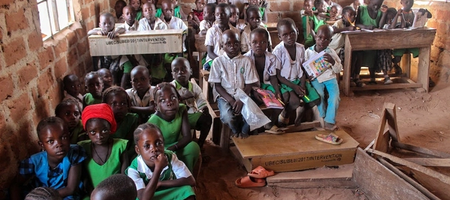Sustainable Development Goal (SDG) Four is about ensuring inclusive and equitable quality education and promoting lifelong learning opportunities for all. Some of the outcome targets of SDG Four are free primary and secondary education, elimination of all discrimination in education, and education for sustainable development.
Since 1997, when the government introduced the Universal Primary Education (UPE) program, millions of learners have been enrolled in schools. However, UPE has been dogged by underfunding and concerns over the quality of learning due to teachers who are overwhelmed by the number of learners.
As a result, at 76.5 per cent, Uganda’s literacy rate still lags behind, according to a March 2022 report from the Uganda Bureau of Statistics (UBOS). This is well below the SDG Four’s target of ensuring countries reach a youth literacy rate of 94 per cent and an adult literacy rate of 90 per cent by 2023.
The realities on the ground tell a different story about UPE. Nowadays, to ensure that their children receive quality education, to match those studying in private schools, some parents in urban settings are agreeing to pay ‘additional charges’.
Like all UPE schools, Biira Church of Uganda Primary School in Bulenga, Wakiso District, receives a capitation grant – an annual Shs20,000 per student – from the government. With slightly over 900 pupils, the school gets some Shs18 million from the government every year – about Shs6 million per term.
The capitation grant covers instructional material, co-curricular activities, school management, administration costs, and contingency expenditure. George William Mubiru, the head teacher, says the money is not enough to run an urban school.
“At a meeting between the School Management Committee (SMC) and parents, the latter agreed that every pupil in the nursery to Primary Six section should pay additional Shs100,000 per term, while Primary Seven pupils pay Shs 120,000 per term. That money caters for incidentals - day-to-day management, feeding the learners and topping up teachers' salary to motivate them,” he says.
The parents also agreed that each Primary Seven pupil pays an additional Shs25,000 for buying a ream of paper. The reams of paper make it possible for the school to conduct beginning of term, mid-term, and end of term examinations for the entire school. The school also has income generating projects that cater for its infrastructural development.
The ‘additional charges’ Biira Church of Uganda Primary School charges are on the lower scale, with some schools charging as much as Shs300,000 per term. Fredrick Kiyingi Kinobe, the district education officer for Wakiso is aware that urban schools in his jurisdiction are charging fees, however, he claims not to know how much they are charging.
“Those schools do not get permission from me to charge additional fees, so I cannot know how much each school charges. However, almost the whole of Wakiso District is now urban. I know schools have overhead costs, such as electricity, water bills, and feeding the learners. The capitation grant does not cover these costs. Parents sit in their meetings and allocate themselves the responsibility of paying fees. The balance goes to motivating the teachers,” he says.
Filbert Baguma, the general secretary of Uganda National Teachers Union (UNATU), says the Education Act, 2008, gives parents the mandate to agree on what to do to make a school run effectively.
“When you divide the capitation grant of Shs20,000 against the number of days in a year, you realise the government pays only Shs80 per student per day. That money cannot sustain a learner in school, and that is why parents top up by paying some fees,” he says.
In January, while addressing head teachers at the National Leadership Institute in Kyankwanzi District, President Yoweri Museveni reiterated that they should stop charging learners, saying the act sabotages government plans of promoting human resource development. He told them that the route to socio-economic transformation is to remove obstacles that prevent children from poor families from attending school.
“Originally, when the government was setting up UPE, it was supposed to contribute 64 per cent towards the education of each learner, while the parent contributes 36 percent. But every year, this changes through political pronouncements. The National Planning Authority made evaluations and found that government funding is very low,” Baguma says.
Are charge disparities breeding inequality in education?
In rural schools, where UPE is still free, the reality is that the quality of education is wanting. In UWEZO’s 2021 National Learning Assessment Report, Are our Children Learning?, children with combined competence (those who could read and comprehend a P2 English story and do P2 division for the whole set of grades from P3-7) stands at 32 per cent.
“Why should the quality of education in rural schools be low? After all, all UPE schools are teaching the same curriculum. UPE is completely free in rural schools because they do not have electricity or water bills. The only charge parents may be paying is for feeding their children at school,” Kinobe says.
The additional charges may have widened the gap between the well-off and disadvantaged learners, with the reality being that less-privileged children have no chance of rising to the top academically.
“SDG Four talks about equality, inclusiveness and quality education for all. It does not provide for social classes. Therefore, stopping some parents from contributing to the running of the schools, while other parents are paying additional charges is only allowing discrimination in the education sector. That is why when making pronouncements, the President always says UPE and Universal Secondary Education (USE) are for the poor. He is saying those who can pay can attain a better education,” Baguma says.
Dr Daniel Nkaada, an education consultant, agrees that additional charges in some schools might improve the quality of learning of the pupils.
“The overhead costs of UPE schools have to be met by the parents. But, the balance can be used to facilitate the teachers, for example with transport costs. This means teachers in some urban areas may be getting some allowances or better facilities which those in the rural areas may not be getting. Of course, these rural learners are disadvantaged,” he says.
While some parents in urban UPE schools can afford the additional charges imposed by schools, many of the urban poor cannot.
“Of course, the children of parents who cannot even make Shs50,000 a month will drop out of school or if they are lucky they will go to the really downtrodden schools. This inequality also happens in USE schools,” Dr Nkaada adds.
However, Frederick Mwesigye, the Executive Director of the Forum for Education NGOS in Uganda (FENU) does not believe the disparity in UPE school charges is breeding inequality.
“There is one fallacy; for Ugandans, everything is measured in terms of money. Money does not buy quality education as many people think. To judge learning disparities on the basis of school charges is not appropriate. There is no evidence to support the theory that because some urban schools have additional charges, their learners are receiving quality education, as compared to rural schools,” he says.
Mwesigye believes other factors, away from additional charges, are the cause of education inequality.
Is the government in the know?
The question is, is the government aware of the disparities in the quality of education on the UPE program? One of the Ministry of Education and Sports’ (MoES) Sector Commitments to the NRM Manifesto 2021 - 2026 is to continue improving the quality of education by strengthening supervision. The combined budget for inspection and monitoring of schools and tertiary institutions in the two Financial Years for 2021/2022 and 2022/2023 was Shs15.35 billion.
However, two weeks ago, the Minister of Education and Sports, Janet Kataaha Museveni, acknowledged that her ministry is falling behind on school inspections, with MoES facing challenges in facilitating inspectors to travel to schools in their jurisdictions, leaving a ration of one inspector per 40 schools.
“The resource envelope for inspection is still low at a fixed budget of Shs4 million per local government per year, which means that the local government can only inspect 11 schools per year, only once. This obviously shows that inspection is still low and we cannot really inform the public what exactly happens in schools all the time,” she said.
During the 2021 campaigns, the ruling party, the National Resistance Movement (NRM), promised to abolish all forms of charges in government-aided schools.
“These efforts to see that schools do not charge have failed to some extent because the government cannot come in to bridge the gap by increasing the capitation grant. Then, there are schools that have fewer teachers than they are supposed to have, and they need to hire one or two private teachers. At the end of the day, even in the local governments, the wages for the teachers are too low,” Dr Nkaada says.
If the government decides to abolish additional charges but does not increase the capitation grant, the future of the quality of education dished out to the millions of learners attending UPE schools seems bleak.





